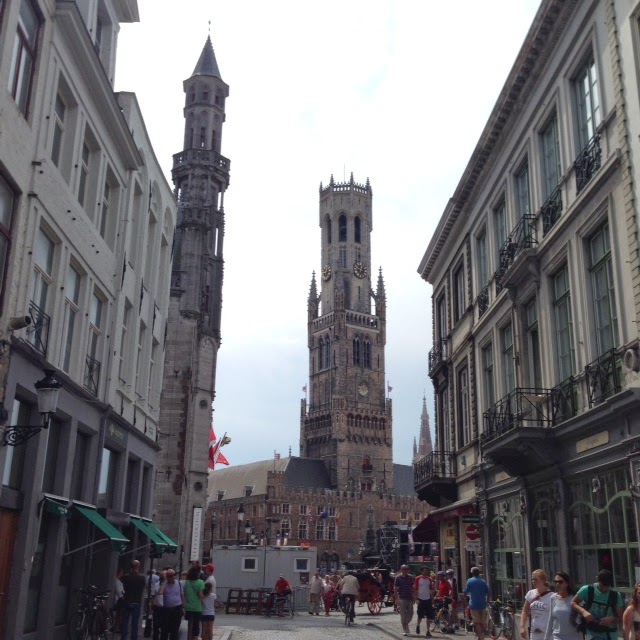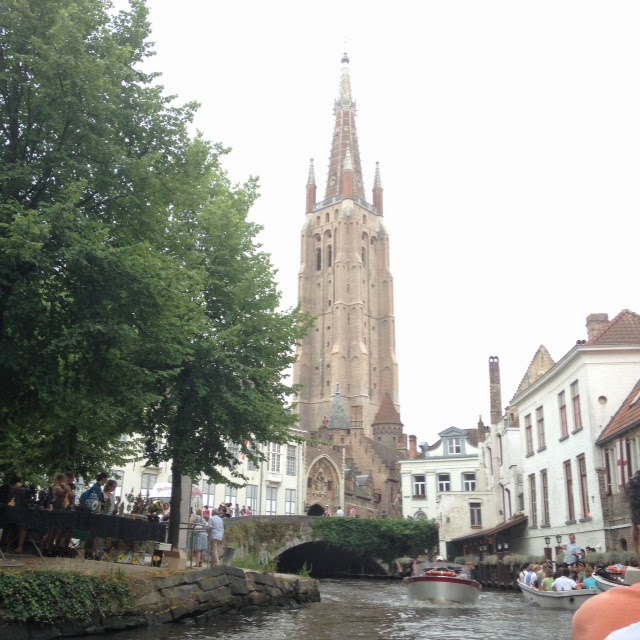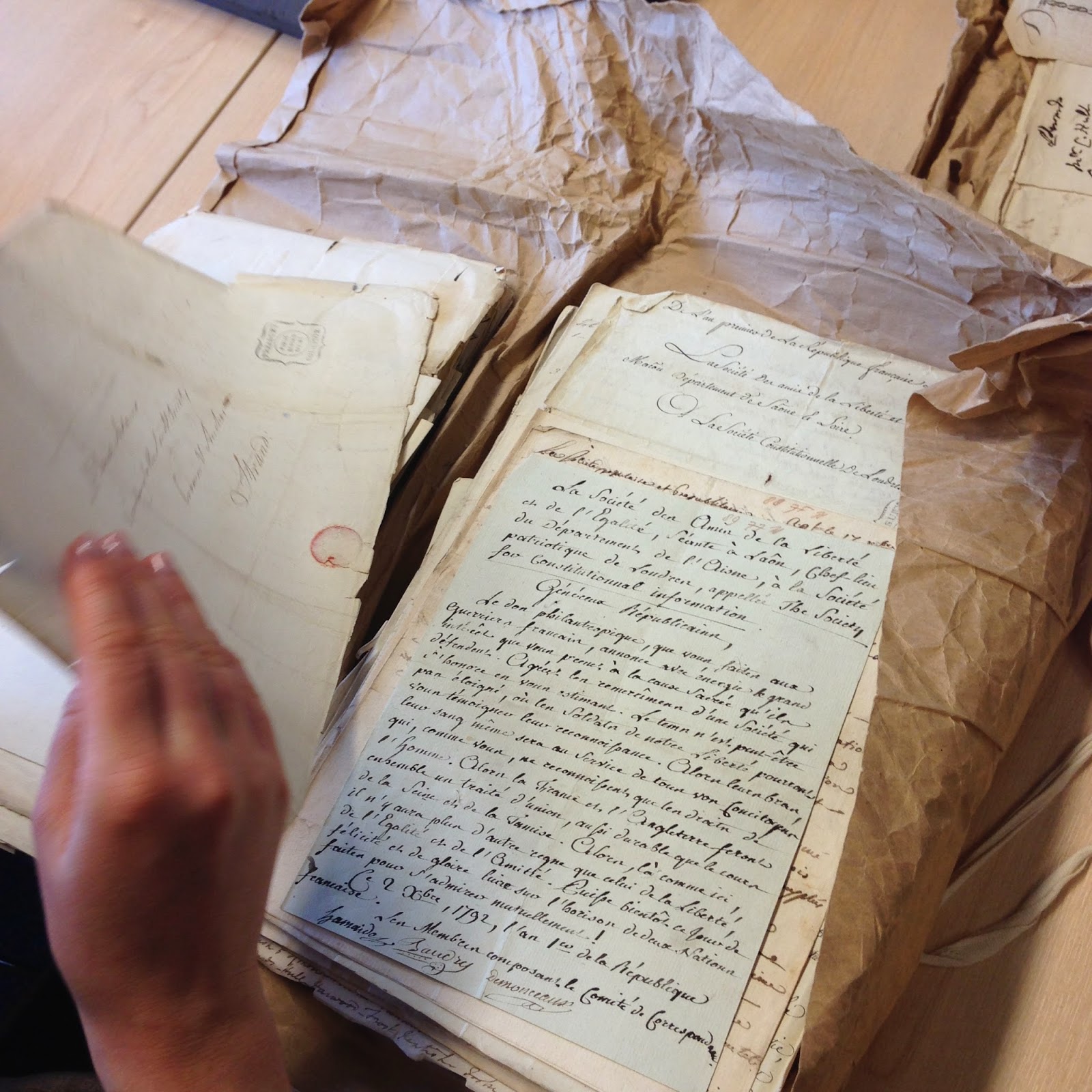It comes as a very pleasant surprise that London's world-class museums are free. I recently paid my fourth visit to the British Museum, and third to the National Gallery. The museums are far too large and overwhelming to see in any single visit. I've still seen only a fraction of what they offer. The magnitude, gravity, and volume of what these museums house, contribute in yet another way to London's grandeur and Britain's power. Behold, the eminence of Great Britain. We house the world's most prized possessions and won't even charge you to see them! I think the message is there. Exploring London day-to-day is a privilege, but the great expense of this pursuit can become a source of anxiety for struggling English majors. The museums are an escape from this financial circumstance. You can spend days exploring these marvels and it's on the Queen. Below, are a few photos that provide a glimpse of a glimpse. Mummies? Socrates? The ROSETTA STONE?! Ya, they've got it.
Wednesday, July 23, 2014
Monday, July 21, 2014
Weekend Getaway to Belgium
Some of the students in the program have made really great use of their time in Europe with weekends off. I’ve spoken with classmates who have already gone to Bath, Oxford, Dublin and Paris, and Rome (among other cities). I recently found out that it was both affordable and relatively easy to get to Belgium. It’s a bit ambitious, given its distance from London and the time constraints of a weekend. All that said, I’ve now done it and it was well worth it. Take a bus. Perhaps you’re wondering how one takes a bus across the English Channel–let me tell you. I booked a ticket through National Express for £54 round trip (as compared to the £250 Eurostar train ticket). The bus leaves central London, drives you to Dover (hi, Shakespeare nerds) where your bus actually drives onto a train. YES. The train goes under the sea in the English Channel Tunnel and emerges in France, where your bus drives off of the train and straight for Belgium. The whole trip takes 9 hours (to Brussels), but you also lose an hour by crossing into a new time zone. If you are going to make a weekend trip out of it, leave as early as you can Friday and return as late as you can Sunday. Remember that you gain an hour back on the return. The bus will take you to the spectacular city Gent, or Brussels (and beyond). I chose Brussels, which was... not quite what I had expected. However, I had heard so many great things about Brugge. I must admit that out all the cities I have ever been, this might be my new favorite. I ended up spending the entire weekend there. English is spoken very widely in Belgium, so getting around is not too complicated. Also, they’re on the Euro, so your money goes much further here than in London. I almost booked a hostel in Brussels for 30 Euros, but found that a hotel was only $87. As a quick note, take euros out of an ATM in London without fees, as many ATMs offer both pounds & euros.
William Blake and the British Museum
Wednesday, July 16, 2014
A Few Recent Photos
St. Giles - located at the heart of 18th and 19th century London slums
Dr. Makdisi at St. George's Parish Church
St. George's Parish Church
Photos from the nearly 1000 year old Borough Market
London Royal Courts of Justice
A few photos from one of my daily jogs: Hyde Park
Hyde Park & Royal Albert Hall
Hyde Park & Kensington Palace
Cailey Hall's Tour in front of the home of John Keats in Hampstead, north London.
Home of John Keats
Hampstead, north London. The inspiration of Romanticists
Walk to Kensington Palace
Homes near Regent's Park
Monday, July 14, 2014
A Note on the Banknote
Here's a few helpful tips on money.
First off, each pound costs
us Americans $1.71 as of July, 2014. The figures that you see in the
stores and restaurants are roughly the same as they are in the US ( £1.50 for a bottle of water, £7 for
a sandwich with chips, £3 for large Americano, etc). Therefore,
most everything costs anywhere from one and a half, to twice as much as it does
at home. Prepare for this. Your £10 lunch is $17.
Don't
use Bureau de Change or other currency converters once in London. Just
pull money from the ATM which converts dollars to pounds automatically.
The ATMs in London don't charge you, but your bank at home does.
I bank with Chase, who charges $5 for each international ATM
withdrawal, and an additional 3% of the amount your withdrawing on top of that.
This is pretty standard. To avoid paying the $5 over and over, take
out fewer, but larger sums. With these fees, you will still pay
substantially less than you will at a walk-up currency converter.
According to Chase, Wells Fargo is the primary international bank in the
US. So if you bank with them, you might find that your fees are lower.
If you already bank with Wells Fargo at home, it might be a good
idea to order a couple hundred £s from home. This takes a couple
days, but is free to you as a Wells Fargo customer. In the long run,
you're only saving $10-$20, perhaps, BUT you've got some money in your pocket
when you get into the city and it's one less thing you have to worry about.
I don't recommend pulling out thousands of pounds in the US and
carrying them over, because losing that money will ruin your whole trip.
Notify your bank that you're leaving the country by calling the number
on the back of the card or going in. You run the risk of getting your
checking account locked up by not letting them know. An overseas
withdrawal for a large some of money is very much a "red flag" with
regard to fraudulent activity. The call will ensure that they don't
freeze your account.
Lastly, does your debit/credit card have a chip in it? They're
usually visible on the front of the card. I didn't let my bank know that
I was leaving until the day before, making it too late to order a free
replacement card with a chip. I didn't really think that this would
be a big deal, but it's been troublesome not having it. The London
Underground ticket machines have difficulty processing cards without chips.
It usually takes me... like 10 swipes to get it to read & accept the
transaction. Also, the city rental bikes are by credit card only. Because
I don't have that chip, the machines do not accept my payment at all.
Thus, I can't rent a bike in all of London. Bummer. But,
now YOU know.
Sunday in London: 74°F
A street vendor's merchandise near Columbia Road.
Directions: Exit Old St. Underground Station (which is within Zones 1 & 2). You can walk or hop on a bus to Columbia Rd from there. We took the bus because we didn't know where we were going, then walked back to the Underground at Old Street. The walk takes only 10-15 minutes.
Friday, July 11, 2014
Visit to the British National Archives
The several hundreds of
documents pulled by Dr. Makdisi were mostly handwritten letters dated in the 18th
century. The content of the letters
enabled us to peer into a compelling period of English history, which is known for its contentious sociopolitical
climate. The French and American
Revolutions of the era revealed that common people were capable of achieving radical political change. Examples of the pursuit of change, as well as the suppression of it, are revealed in some of the documents that we held in our hands. Some more noteworthy
documents viewed and handled included an original Thomas Paine publication as
well as a statement drafted by the then radical London Corresponding Society,
encompassing its aspirations of political reform. To actually touch, see, (and even smell) these
exquisitely written documents, and recognize their historical impact is an
experience that I’d deem priceless–and it’s free.
Subscribe to:
Comments (Atom)
























































